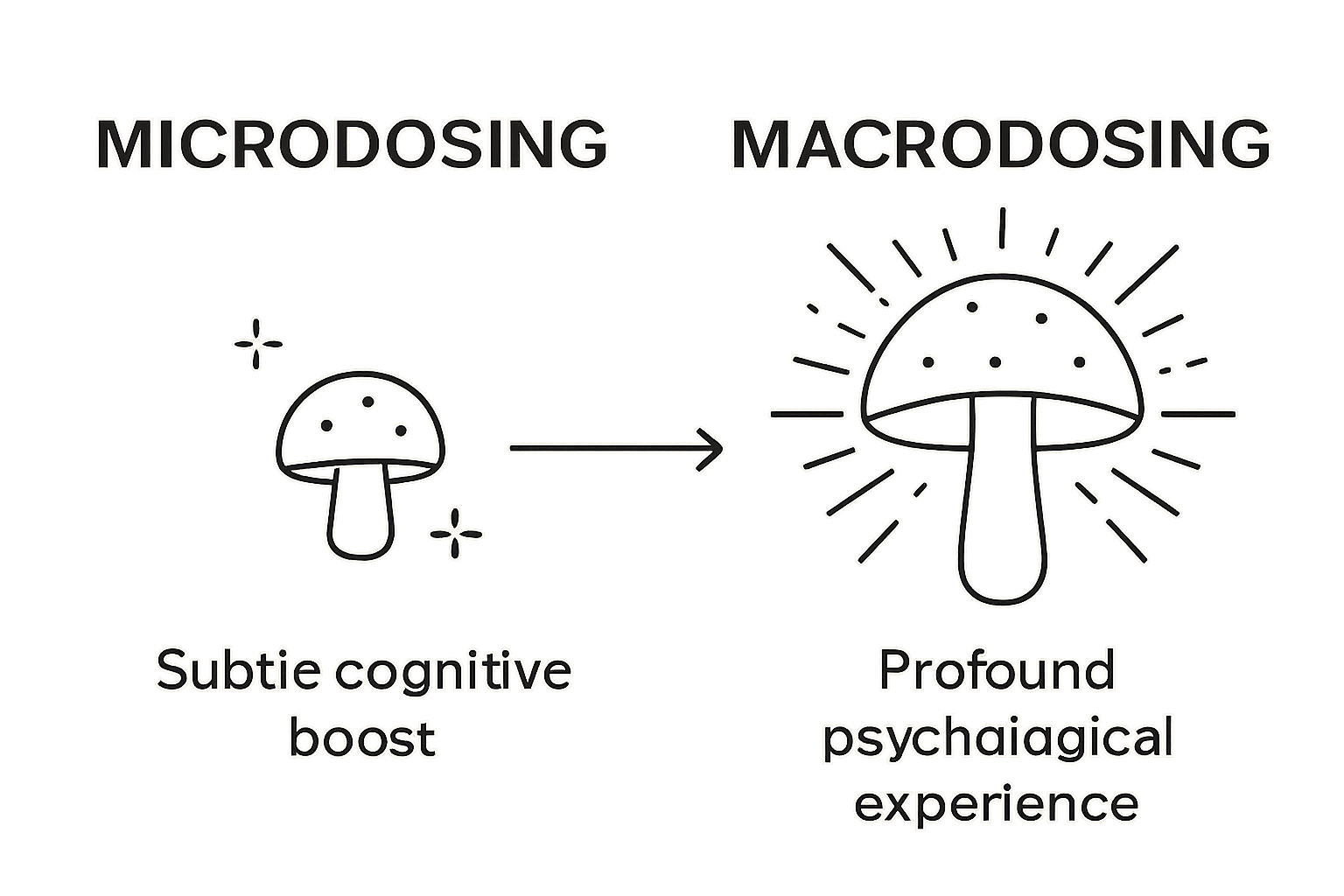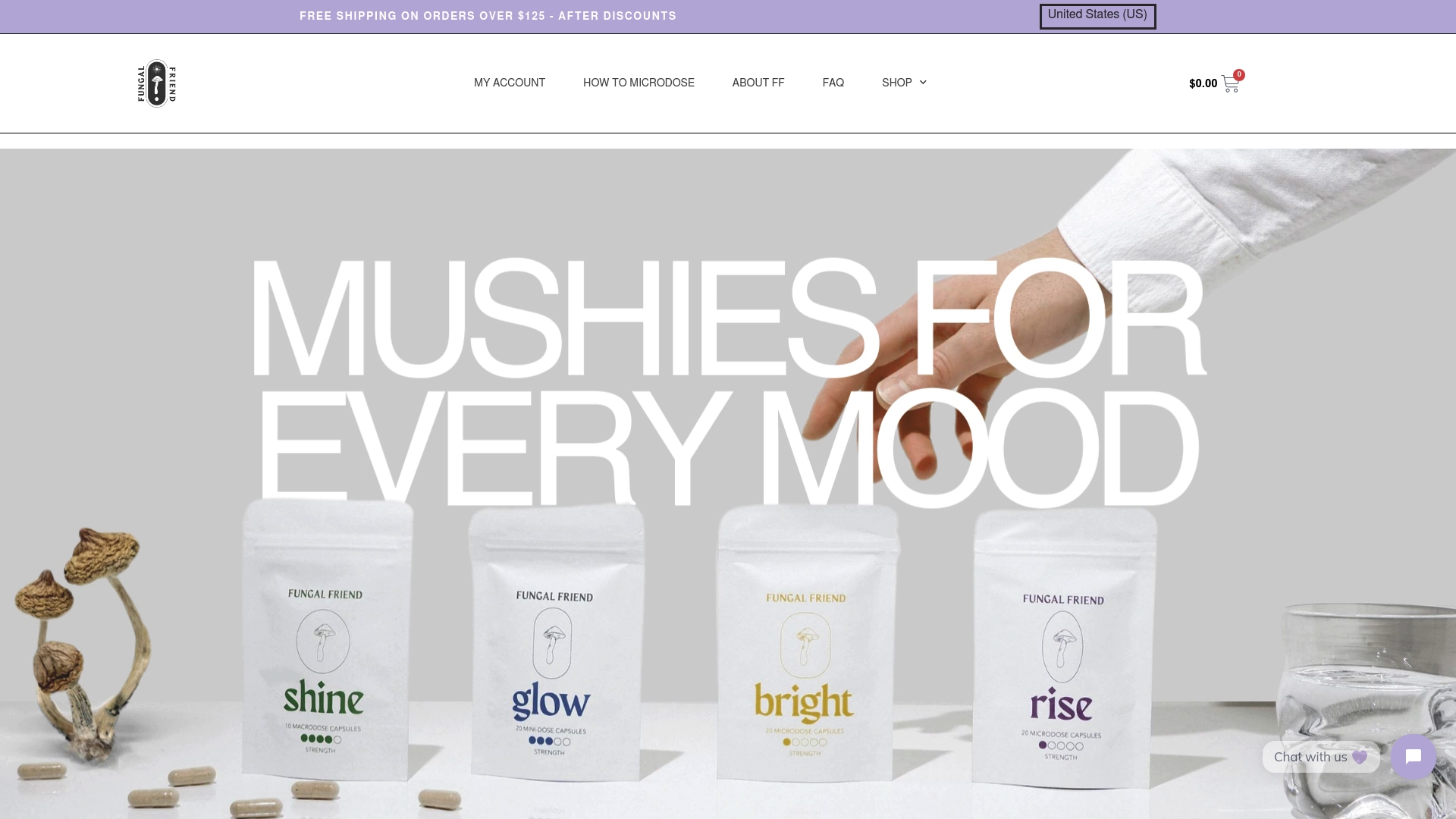Understanding Magic Mushroom Terminology for Wellness
Magic mushrooms have been part of human culture for thousands of years and still spark intense curiosity today. Some people think of them as just quirky forest fungi, but modern science is rewriting the story. Recent clinical research found that psilocybin-assisted therapy delivers large, rapid, and sustained antidepressant effects, sometimes surpassing traditional treatments. The wild part? These mushrooms are more than a trip—they might become a key to unlocking new mental health breakthroughs.
Table of Contents
- Defining Magic Mushrooms: What They Are And Their History
- The Science Behind Psilocybin: How It Affects The Brain
- Key Terms In Magic Mushroom Culture And Community
- Exploring Strains: Understanding Variants And Their Effects
- Practical Applications: Magic Mushrooms In Mental Health And Wellness
Quick Summary
| Takeaway | Explanation |
|---|---|
| Magic mushrooms contain psilocybin, a psychoactive compound. | Psilocybin transforms brain chemistry, leading to unique neurological effects and potential therapeutic applications. |
| Cultural significance dates back thousands of years. | Indigenous cultures revered these mushrooms for spiritual communication and healing practices, highlighting their historical importance. |
| Psilocybin promotes neuroplasticity in the brain. | This compound increases brain connectivity, allowing for new neural pathways and potential healing in mental health. |
| Strain selection affects psychoactive experience. | Different strains of magic mushrooms vary in potency and psychological effects, influencing the nature of the experience. |
| Magic mushrooms show promise in mental health treatment. | Clinical research indicates substantial benefits for conditions like depression, anxiety, and addiction through psilocybin-assisted therapy. |
Defining Magic Mushrooms: What They Are and Their History
Magic mushrooms represent a fascinating category of naturally occurring fungi containing psilocybin, a powerful psychoactive compound that has captivated human interest for thousands of years. These remarkable organisms are not just random forest dwellers but complex biological entities with profound historical and cultural significance. Learn more about the historical context of magic mushrooms in Canada.
Botanical Origins and Characteristics
Psilocybin-containing mushrooms belong to several genera, primarily Psilocybe, which includes over 200 species distributed across various global ecosystems. These mushrooms typically feature slender stems and distinctive caps, often displaying colors ranging from tan to reddish brown. Unlike typical culinary mushrooms, magic mushrooms contain psilocybin and psilocin, compounds responsible for their unique neurological effects.
According to research published in ‘Fungi’, the historical use of these mushrooms extends far beyond modern scientific exploration. Indigenous cultures in Mesoamerica, particularly the Aztec and Mazatec civilizations, revered these fungi as sacred tools for spiritual communication and healing practices.
Cultural and Scientific Evolution
The modern understanding of magic mushrooms emerged dramatically in the mid-20th century. Key developments include:
- 1955: R. Gordon Wasson’s groundbreaking ethnomycological research with Maria Sabina in Mexico
- 1958: Albert Hofmann’s first isolation of pure psilocybin compound
- 1960s: Extensive psychological research exploring potential therapeutic applications
Today, contemporary scientific research is rekindling interest in psilocybin’s potential for treating mental health conditions, including depression, anxiety, and addiction. The journey of magic mushrooms represents a complex intersection of traditional knowledge, cultural practices, and emerging scientific understanding.
The Science Behind Psilocybin: How It Affects the Brain
Psilocybin represents a remarkable compound that fundamentally transforms brain chemistry and neural communication, offering profound insights into human consciousness and neurological functioning. Explore how psilocybin interacts with your brain to understand its intricate mechanisms.
Neurochemical Interactions and Receptor Dynamics
At its core, psilocybin operates by mimicking serotonin, a critical neurotransmitter responsible for mood regulation, perception, and cognitive processes. When ingested, psilocybin quickly converts to psilocin, which directly binds to serotonin receptors, particularly the 5-HT2A receptor sites. This unique interaction triggers a cascade of neurological events that fundamentally alter brain connectivity and information processing.
According to research indexed on PubMed, psilocybin demonstrates remarkable capabilities in increasing neuroplasticity, enabling the brain to form new neural pathways and synaptic connections. This neurobiological transformation explains many of the compound’s potential therapeutic applications in mental health treatment.
Brain Network Reconfiguration
Psilocybin’s most fascinating effect involves dramatically reorganizing brain network communications. Under its influence, brain regions that typically operate independently begin communicating more extensively, creating what neuroscientists describe as increased neural entropy. This phenomenon manifests through several key characteristics:
- Breakdown of traditional neural communication hierarchies
- Enhanced cross-hemisphere brain communication
- Temporary disruption of default mode network functioning
These neurological shifts contribute to the compound’s potential for disrupting entrenched mental patterns, offering promising therapeutic approaches for conditions like depression, anxiety, and addiction. The brain essentially becomes more flexible, allowing individuals to experience novel perspectives and potentially rewire longstanding psychological limitations.
Key Terms in Magic Mushroom Culture and Community
The language surrounding magic mushrooms reflects a nuanced, evolving understanding of these fascinating fungi and their complex interactions with human consciousness. Learn more about demystifying magic mushroom myths to navigate this intricate cultural landscape.
Foundational Cultural Terminology
Within magic mushroom communities, specific terminology helps communicate experiences, intentions, and approaches with precision. Entheogen represents a critical concept, describing substances that generate spiritual or mystical experiences. This term distinguishes psilocybin mushrooms from recreational intoxicants, emphasizing their potential for personal transformation and healing.
According to research from the National Institutes of Health, contemporary psychedelic culture has developed sophisticated language to describe nuanced consumption practices and psychological states.
Consumption and Experience Vocabulary
Key terminology helps practitioners understand and communicate their experiences more effectively. The most important distinctions include:

- Microdosing: Consuming sub-perceptual amounts of psilocybin to enhance cognitive function
- Macrodosing: Taking larger quantities intended for profound psychological exploration
- Set and Setting: The psychological mindset and physical environment surrounding a psychedelic experience
These terms reflect a responsible, intentional approach to working with psilocybin mushrooms. They underscore the community’s commitment to understanding these substances as tools for personal growth, mental health support, and spiritual exploration, rather than mere recreational substances.
Below is a comparison table explaining key terms used in magic mushroom culture and the community to help clarify essential vocabulary.
| Term | Definition | Community Context |
|---|---|---|
| Entheogen | A substance that generates spiritual or mystical experiences | Emphasizes use for transformation/healing |
| Microdosing | Consuming sub-perceptual amounts of psilocybin to enhance cognitive function | Used for daily wellness/mental clarity |
| Macrodosing | Taking larger quantities intended for profound psychological exploration | Pursued for deep therapeutic experiences |
| Set and Setting | The psychological mindset and physical environment surrounding a psychedelic experience | Considered critical for safe outcomes |
| Psilocybin | The primary psychoactive compound in magic mushrooms | Main agent responsible for effects |
Exploring Strains: Understanding Variants and Their Effects
Magic mushroom strains represent a fascinating spectrum of biological diversity, each offering unique psychoactive profiles and potential therapeutic applications. Understanding these variations is crucial for responsible and intentional use. Discover the nuanced world of magic mushroom strains to navigate this complex landscape.
Genetic Diversity and Compound Variability
Psilocybe cubensis, the most common magic mushroom species, encompasses numerous strains with distinctive characteristics. Genetic composition plays a critical role in determining the concentration of psychoactive compounds like psilocybin and psilocin. According to advanced scientific analysis, strains such as Blue Meanie, Creeper, B-Plus, Texas Yellow, and Thai Cubensis demonstrate significant variations in their chemical profiles.
Notable Strain Characteristics
Each magic mushroom strain offers a unique combination of attributes that influence user experience. Key distinguishing factors include:
- Potency Levels: Variations in psilocybin concentration
- Growth Characteristics: Differences in size, color, and cultivation requirements
- Psychological Effects: Subtle variations in emotional and cognitive impact
These variations underscore the importance of understanding individual strain properties.
 Experienced practitioners recognize that strain selection can dramatically influence the depth, duration, and qualitative nature of the psychedelic experience, making informed choice a critical aspect of responsible usage.
Experienced practitioners recognize that strain selection can dramatically influence the depth, duration, and qualitative nature of the psychedelic experience, making informed choice a critical aspect of responsible usage.
This table outlines distinguishing characteristics of notable magic mushroom strains, summarizing their key features for easy comparison.
| Strain | Potency Level | Growth Characteristics | Psychological Effects |
|---|---|---|---|
| Blue Meanie | High | Rapid grower, dense fruits | Intense visuals, euphoria |
| Creeper | Moderate | Tall, fast to colonize | Uplifting, creative thinking |
| B-Plus | Moderate | Versatile, easy to cultivate | Balanced, gentle introspection |
| Texas Yellow | Moderate-High | Bulky stems, golden cap | Energetic, vivid sensory effects |
| Thai Cubensis | Moderate | Heat tolerant, thick stems | Energetic, sociable experience |
Practical Applications: Magic Mushrooms in Mental Health and Wellness
Magic mushrooms represent a groundbreaking frontier in mental health treatment, offering profound potential for addressing complex psychological challenges. Explore the therapeutic uses of psilocybin to understand their transformative capabilities.
Targeted Mental Health Interventions
Psilocybin demonstrates remarkable promise in addressing several critical mental health conditions. According to clinical research published in JAMA Psychiatry, psilocybin-assisted therapy has shown significant potential for treating major depressive disorder, offering large, rapid, and sustained antidepressant effects that traditional pharmaceutical interventions often struggle to achieve.
Holistic Wellness Applications
Beyond traditional psychiatric treatment, magic mushrooms offer comprehensive wellness benefits across multiple domains:
- Emotional Resilience: Reducing symptoms of anxiety and depression
- Neuroplasticity: Enhancing brain connectivity and cognitive flexibility
- Spiritual Growth: Supporting personal introspection and psychological healing
- Addiction Recovery: Interrupting destructive behavioral patterns
These applications underscore psilocybin’s potential as a multifaceted wellness tool. By promoting neurological reorganization and emotional processing, magic mushrooms offer a nuanced approach to mental health that goes beyond conventional treatment modalities, emphasizing holistic psychological transformation.
Transform Magic Mushroom Knowledge Into Wellness With Fungal Friend
Are you feeling overwhelmed by all the new terms and concepts around psilocybin, microdosing, and strain selection? Understanding magic mushroom terminology is the first step toward safe and effective use, but finding trustworthy sources and personalized solutions can still be a real struggle. You deserve access to reliable products and clear information that matches your unique wellness goals. Begin your wellness journey with confidence by browsing our Uncategorized Archives – Fungal Friend for real insight into product options, safe use, and key terms explained in simple language.

Ready to put your knowledge into action? Visit Fungal Friend to explore expertly crafted microdose capsules, teas, and chocolates tailored to your needs. Make the most of your learning by choosing a partner that values education, safety, and discreet service. Take the next step today and discover a supportive wellness community ready to guide you.
Frequently Asked Questions
What are the primary differences between microdosing and macrodosing magic mushrooms?
Microdosing involves taking a sub-perceptual amount of psilocybin to enhance cognitive function, while macrodosing refers to consuming larger quantities intended for profound psychological exploration.
What is the significance of ‘set and setting’ in magic mushroom experiences?
‘Set and setting’ refers to the psychological mindset and physical environment that influence the psychedelic experience, playing a crucial role in determining the outcomes and emotional responses during the session.
How do different strains of magic mushrooms vary in terms of effects?
Different strains, such as Blue Meanie or B-Plus, vary in psychoactive potency, growth characteristics, and psychological effects, which can significantly influence the user’s experience and outcomes.
What potential therapeutic benefits do magic mushrooms offer?
Magic mushrooms have demonstrated potential for treating mental health conditions like depression and anxiety, enhancing neuroplasticity, promoting emotional resilience, and supporting addiction recovery.
